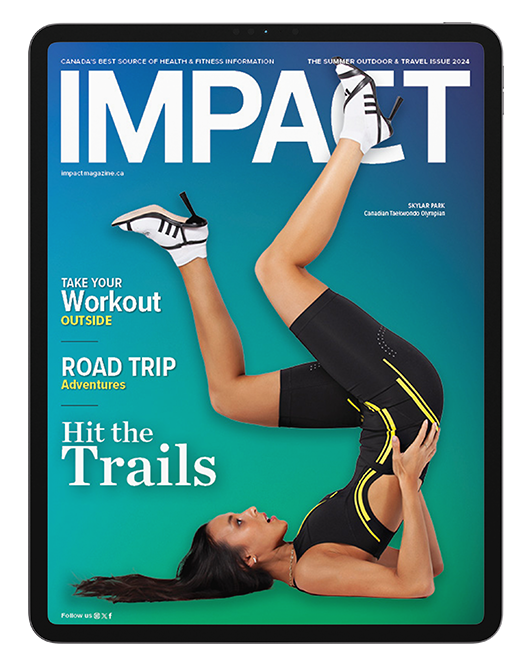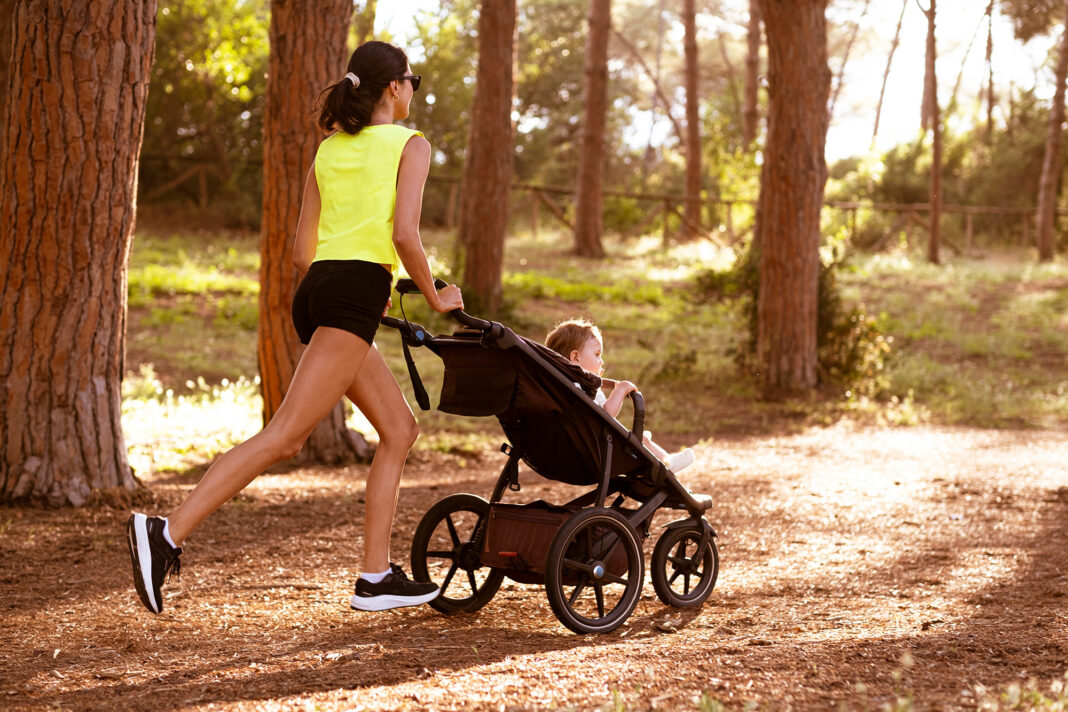Returning to running postpartum can be daunting and, quite frankly, scary. There may be minimal guidance around how to safely get started, and your medical team could very well tell you that you’re good to go at your six-week appointment—without actually doing a proper assessment.
The first thing to remember is that just because you are medically discharged at six weeks does not necessarily mean you are ready to lace ’em up the very next day. Instead, your approach to returning to running should include a series of milestones that should be assessed, and symptoms to be aware of that may signal that you should pull it back.
Running is a high-impact activity—it requires the force of 2.5-6 times your bodyweight with every step, and that’s just on one leg. And these aren’t the only factors that make a postpartum return to running stressful on the body. New mothers should also consider how much sleep they’re clocking, their energy availability, if they’re breastfeeding, how active they were pre-pregnancy, and more, before making a plan to return to running.
Milestones
Before returning to a regular running routine, certain milestones should be reached—and how long it takes to reach them may be different for everyone. Pelvic floor strength, endurance, and coordination are key, but factors such as incontinence, how well you’re able to balance, and an analysis of your gait should be considered equally important. Seeing a pelvic physio for a full assessment no matter how you gave birth is highly recommended.
Additionally, the amount of ease with which you’re able to perform key exercises is a good indication of where you stand. Try testing exercises such as walking for 30 minutes, balancing on each leg for 10 seconds, jogging on the spot for one minute, forward bounding 10 times, and performing 20 single-leg bridges on either side. Performing these exercises without experiencing pain or symptoms is a good indicator of readiness.
Support
As an active person, you may err on the side of caution even if you’re able to perform these exercises without limitations. Even if you’re feeling up to it and you’re ready to jump out the door on your first run, it’s still important to ease into your first few runs. Not only because your body just went through a huge change, but also because your muscles, tendons, and bones need to be slowly reintroduced to the load of running.
And there are plenty of activities to keep you busy, while increasing your strength and endurance. Before you start running, focus on building mobility, control, and strength with exercises such as single-leg balance work, running on the spot, and hopping. There are many other forms of aerobic exercise that lend themselves to improving your running when you return, so take this time to enjoy brisk walks uphill, biking, the elliptical machine, or even pool running.
Along with cardio, it’s vital that you incorporate strength training, specifically pelvic floor strengthening into your routine. Strength should focus on first re-engaging the pelvic floor and core with the breath, starting with exercises on the mat and progressing to standing and single leg.
Mindset
Do not be surprised if the body you are in feels foreign. This is very common and you are certainly not alone. Be kind to yourself. Your body just did something amazing—it grew a human! It’ll take some time for you to feel like you once did, and that is okay. It’s also normal to be surprised by how different running might feel—you might feel a little like Bambi in the beginning.
Lastly, do not compare yourself to anyone else or yourself previously; after all, comparison is the thief of joy. All frustration is born of missed expectations, so be sure to also set them appropriately and adapt to how you feel. There is a high probability that the progression will not be as linear as you would like, and there will be some ups and downs along the way. Listen to your body and make changes based on what you feel. The sooner you can accept where you are, the better your experience is going to be.
No matter what your journey looks like, take it slow: Slow progress is always better than jumping ahead and potentially making yourself vulnerable to a setback. Embrace the process of your return to running—and celebrate with your brand new tiny cheerleader.
You may also like: WORKOUT

Read This Story in Our 2024 Summer Outdoor & Travel Issue
Featuring Canadian Taekwondo Olympian, Skylar Park. Must-visit adventure destinations across Canada. Your best trail running season ever with FAQs and threshold training plans. How (and why) gravel biking can rule your summer. Essential preparation to stay injury-free during hikes. Zero-waste your hiking and camping trips like a pro. Treat yourself with a Rustic Strawberry Chocolate Tart or Dairy-Free Vanilla Ice Cream, and so much more.

















